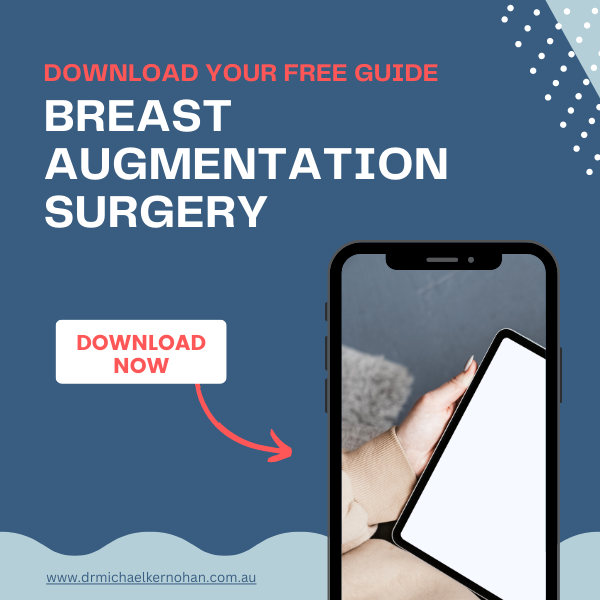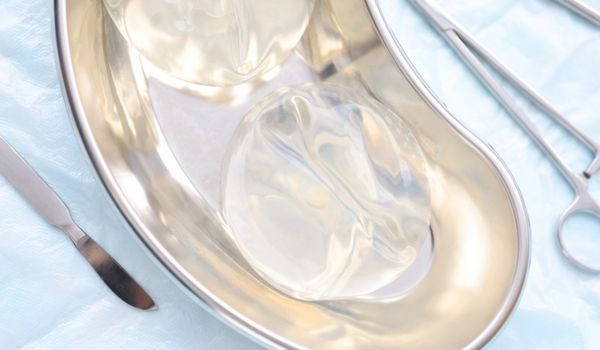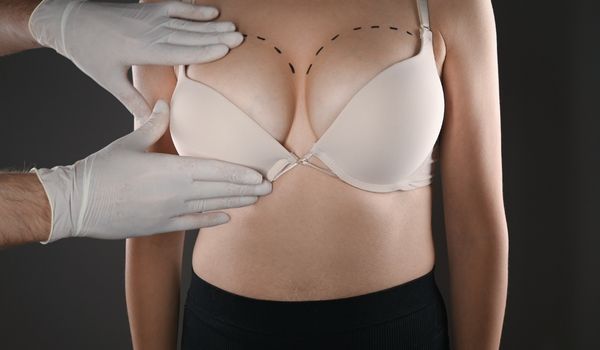Different Types of Breast Implant Placement for Breast Augmentation Surgery
- Interested in getting a breast augmentation surgery?
- Wondering how the placement of the implants can affect the results?
- Do you want to know what breast implant placement would work best for you?
The breast implant is one of the most sought-after procedures and one of the most common cosmetic surgeries for women, and this is due to many social and economic factors. Following technological and medical developments, it is easier than ever to have such a procedure. Still, it is very important for the patient to be as informed as possible about the intervention. If you are considering breast augmentation surgery, it is essential to have an open discussion with your surgeon, who has plenty of experience in plastic surgery. It is important to ask your surgeon as many questions as possible about the procedure he is going to perform to ensure you have all the necessary information. One such question that must be addressed is related to breast implant placement. Because this choice will affect your body and figure and how you feel, it is important to know as many details as possible about the breast implant and its placement.
Dr Michael Kernohan has years of experience in treating breast issues. He performs different procedures such as breast augmentation, lift, and reduction or sometimes a combination of these procedures to help patients achieve their dream breasts.
CLICK to Download Dr Michael Kernohan Cosmetic Breast Surgery Guide

What Is Breast Implant Placement?
Many patients do not know that there are different options for placing the breast implant; it can be placed under the muscle, above the muscle, or in a “dual plane” position. There are different factors that determine the placement of the implant, as well as the type and size of the implant. Among the factors that determine the position of your breast implant are: weight, age, body type, health condition, as well as medical history, desired implant size, saline or silicone implant, but not ultimately, your own wishes and preferences.
This is where the expertise of your surgeon comes into play. Based on his experience and the interventions performed, the surgeon can give you advice and direct you to choose the most optimal placement. It is extremely important for each patient to realize the difference between the three types of positions, as well as the advantages and disadvantages of each of them.
1. Subglandular Breast Implant Placement
This position refers to the positioning of the breast implant over the muscles. Technically during the operation, the implant will be positioned over the chest muscles, between them and the already existing breast tissue.
This over-the-muscle placement is recommended for people who want to enlarge their breasts but also have enough breast tissue to cover the implants. There are two options with this technique, under the muscle fascia(but onto of the muscle itself) or on top of the muscle fascia. The best solution is tailored to each individual patient.
Advantages: after the breast augmentation operation with breast implant placement under the glandular tissue, you will be able to do exercises without worries and without too much movement of the breasts. At the same time, the discomfort after the operation will be less felt in this case.
Disadvantages: such a procedure will change the appearance of the breast, an unnatural appearance may appear in some cases, and in the case of a mammogram, the scan can be more difficult to read.
2. Submuscular Breast Implant Placement

Submuscular breast augmentation is performed by placing the breast implant under the chest muscle known as the pectoralis major, this is a different technique compared to the subglandular breast implant surgery.
Advantages: as an advantage, patients who opt for such breast enlargement surgery will be able to have mammograms that will provide much clearer and more concise results.
Another advantage is the natural appearance that many women want. After placing the implant under the chest muscles, the result will look much more natural, thus avoiding the fake breasts effect.
Disadvantages: after the operation, depending on the case, there is a chance that the recovery period will be a little more difficult and longer than for those who opt for the subglandular breast augmentation surgery.
3. Dual Plane Breast Implant Placement
When the dual plane breast implant placement is performed, only the top part of the breast implant is immediately behind the pectoralis muscle, while the lower half is behind the breast tissue. As the muscle offers a better covering of the top part of the breast implant in the cleavage area, it is the best option for women who have thin or very little breast tissue.
Dual-plane implants can be positioned lower in sagging breasts to fill the bottom pole and give the breasts a perky look. Be aware that dual-plane can help with minor cases of sagging but does not eliminate the necessity for a mastopexy treatment in situations of moderate to severe sagging.
Advantages: the main benefit is that more soft tissue is used in this procedure to conceal or mask the underlying implants. Because of this, the breast form is improved and the transition from implant to breast is smoother, giving the breasts a more natural appearance. With this method, the danger of capsular contracture is also reduced. Reading mammograms is fairly simple.
Disadvantages: after dual-plane surgery, patients could have more pain and delayed recovery, but bear in mind that these side effects are just transient and serve your long-term interests. The method also entails some other specific complications. If the muscle is not released to the right degree, it may result in high-riding implants or complications, including snoopy nose deformity.

Regardless of the procedure chosen, the chest muscle plays the most important role in positioning the breast implant. Practically the chest muscle determines the optimal positioning, and your surgeon will determine this. Each patient who opts for breast augmentation will have a different level of muscle tissue as well as a different density compared to other patients. Following the physical inspection performed by your surgeon, he will recommend the optimal type of implant placement.
It is very important to have an open discussion with the surgeon about what you want, about your health, and about the way you want your body to look. Having this talk during the initial consultation is crucial to allow the surgeon to understand your wishes and offer the best solutions for your particular case.
Drop and Fluff of Breast Implants
If you’ve been interested in getting breast implants or if you have friends who have implants, you’ve probably heard that it takes a certain amount of time for them to “drop and fluff”. What exactly does this mean?
When breast implants are placed under the pectoralis major muscle, they are initially flattened by the muscles and sit high on the chest, swollen in the upper pole due to the intense inflammation of the pectoral muscle. At the same time, they are hard and rigid – immovable. Some patients are concerned during this phase in the recovery as the breasts look more like rocks than the natural breast tissue they are used too. All these things are temporary, and the breasts will become softer and more supple from month to month.
Over time, the implant stretches the pectoral muscle and breast tissue, and the implant fluffs and drops in its pocket, and the breast becomes rounder and fuller and better contoured in the lower pole. The areola which at first can look down now rises again. This process depends from person to person, but most of the time, it happens around three months after the operation. It is important for patients to know that it takes time for the final results of the surgery to be fully visible.
FAQS about Implant Placement Options and Breast Augmentation Surgery
Can I choose what type of breast implant placement I prefer?
- The breast implant placement is decided together with your plastic surgeon during the initial consultation for breast augmentation. Your plastic surgeon will suggest a suitable type of placement after taking into consideration your specific requirements and characteristics, such as implant size and shape, existing breast tissue, and desired results. An experienced plastic surgeon can guide you to achieve optimal results after your breast augmentation surgery.
Is it better to get the implants placed under the muscles or glandular tissue?
- There are advantages and disadvantages to both types of implant placement. In the case of submuscular placement, there is a lower risk of rippling. At the same time, patients have a slightly lower risk of developing capsular contracture. It is more difficult to feel the implants through the natural breast tissue when they are inserted under the pectoral muscle. Most of the breast implants nowadays are placed under the muscle. However, it is important to know that there are certain benefits to subglandular placement too. In this case, often the procedure takes less time to be performed and also the recovery is shorter. Less post-operative discomfort is reported by patients getting implants under the glandular tissue.
What are the potential risks and complications of breast augmentation with implants?
- The risks of breast augmentation with implants are common risks of any surgical intervention such as infection, excessive bleeding, and unsightly scarring. However, there are other risks associated with the use of implants such as implant malposition, capsular contracture, and breast asymmetry, implant rippling or bottoming out. The risks and complications of the procedure can be minimized when choosing a specialist plastic surgeon experienced in performing breast augmentation procedures.
How is the recovery after a breast implant surgery?
- The recovery after a breast implant surgery is dependent on the health condition of the patient, the size of the implants, type of incision and placement of the implants. Most patients can return to their daily activities within the first few days post-op. It is important to avoid intense physical activities as this can trigger unnecessary pain and complications such as implant migration or the rupture of the incisions. Patients are advised to avoid sleeping on the tummy or the sides for a minimum of six weeks post-op. Sun exposure is also not recommended, as it can cause a hyperpigmentation of the incisions and unfavourable scarring.
When can I see the final results of my breast implants surgery?
- As your plastic surgeon will let you know, the breasts will be bigger immediately after the surgery, but it can take a few months or more for the final results of the procedure to be visible. In the beginning of the recovery period, the breasts are hard and high on the chest wall. In time, the breasts will fluff and drop, descending to a more natural position on the chest wall. The final results of the surgery can be evaluated after six months from the procedure. Keep in mind that the settling process can also take up to 12 or 18 months.
Further Reading about Breast Procedures and Breast Implants
- Read Dr Kernohan’s Breast Augmentation Surgery Page
- Read Dr Kernohan’s Breast Lift with Implants Surgery Page
- Read Dr Kernohan’s Mini Breast Augmentation Sydney page
- Read Dr Kernohan’s Blog about How to Choose the Right Size Breast Implant





